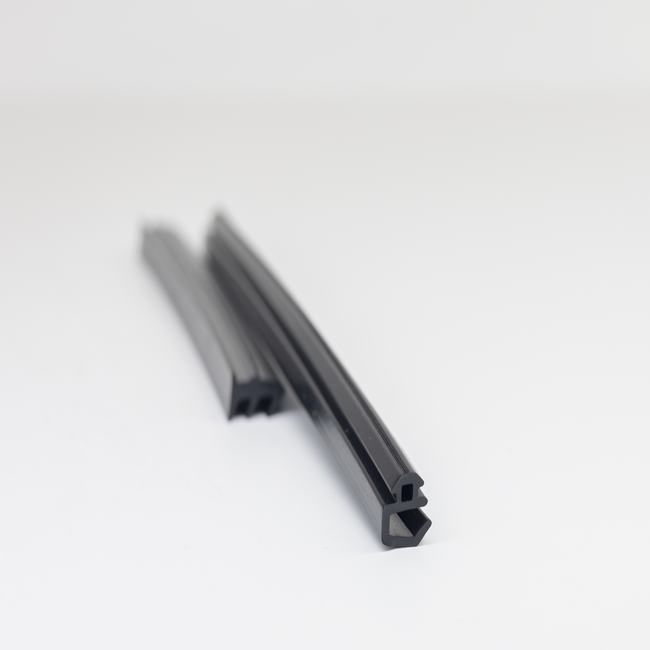Dilatation seals, often referred to as expansion joints or expansion bellows, are crucial components in various engineering and construction applications. These specialized devices are designed to accommodate thermal expansion, contraction, vibration, and other dynamic forces within structures, systems, and machinery, while simultaneously maintaining a secure and leak-free environment. The term “dilatation” refers to the act of expanding or stretching, and dilatation seals serve this purpose by allowing for controlled expansion and contraction without compromising the structural integrity of the systems they are installed in.
Here is a detailed description of dilatation seals, including their types, functions, materials, and applications:
Types of Dilatation Seals:
- Rubber Expansion Joints: These are made of various elastomeric materials like neoprene, EPDM, or natural rubber. They are ideal for absorbing movement and vibrations in pipelines and ducting systems, preventing damage to the surrounding infrastructure.
- Metal Expansion Joints: Constructed from stainless steel, carbon steel, or other alloys, metal expansion joints are suited for high-temperature and high-pressure applications, such as in industrial pipelines, power plants, and refineries. They provide excellent resistance to corrosion and wear.
- Fabric Expansion Joints: Fabric expansion joints are made of layers of high-temperature resistant fabrics, such as PTFE, fiberglass, or Kevlar. They are commonly used in applications like flue gas ducting and HVAC systems to compensate for thermal movement and misalignment.
- Packed Slip Expansion Joints: These joints utilize a series of packing material layers to create a flexible, leak-tight seal. They are employed in high-temperature applications and can handle axial, lateral, and angular movement.
- Gimbal Expansion Joints: Gimbal expansion joints are designed to accommodate angular movement in multiple planes. They are commonly used in piping systems that require a wide range of motion, such as in shipbuilding or industrial machinery.
Functions of Dilatation Seals:
- Thermal Expansion and Contraction: One of the primary functions of dilatation seals is to absorb and accommodate the thermal expansion and contraction of materials in various structures. This is critical in applications where temperature variations are significant, like industrial furnaces, steam piping, and bridges.
- Vibration and Shock Absorption: Dilatation seals can mitigate vibrations and shocks that occur in machinery and systems, thus preventing structural damage and ensuring smoother operation.
- Misalignment Compensation: They help compensate for misalignment between connected components, allowing for smooth and efficient operation in situations where precise alignment is challenging to maintain.
- Noise Reduction: In some cases, dilatation seals can help reduce noise transmission in ducting and piping systems by isolating vibrations and preventing their propagation.
Materials Used in Dilatation Seals:
The choice of materials for dilatation seals depends on the specific application and environmental conditions. Common materials include:
- Rubber or Elastomers: Neoprene, EPDM, Nitrile, and other rubber compounds are used for their flexibility and resistance to chemicals and weathering.
- Metal Alloys: Stainless steel, carbon steel, and other alloys are chosen for their strength, durability, and resistance to corrosion.
- High-Temperature Fabrics: Materials like PTFE, fiberglass, Kevlar, and silicone-coated fabrics are employed for applications that involve extreme temperatures and aggressive chemical environments.
Applications of Dilatation Seals:
Dilatation seals find application in a wide range of industries and settings, including:
- Piping Systems: In industrial processes, power plants, and petrochemical facilities to handle the movement of fluids and gases.
- Building and Construction: In bridges, buildings, and infrastructure projects to account for thermal expansion and contraction.
- Aerospace: In aircraft and spacecraft to absorb vibrations and thermal fluctuations.
- Automotive: In vehicles to compensate for engine movement and suspension adjustments.
- HVAC Systems: To maintain airtight seals in heating, ventilation, and air conditioning ducts.
- Marine: In ships and offshore structures to handle wave-induced motion and flexing.
- Oil and Gas: In pipelines, refineries, and offshore platforms to deal with high temperatures and pressures.
In summary, dilatation seals are essential components in numerous engineering and construction applications, ensuring the integrity, safety, and efficiency of systems and structures subjected to various dynamic forces, including temperature fluctuations, vibration, and misalignment. The selection of the appropriate type and material of dilatation seal depends on the specific requirements of the application in question.









